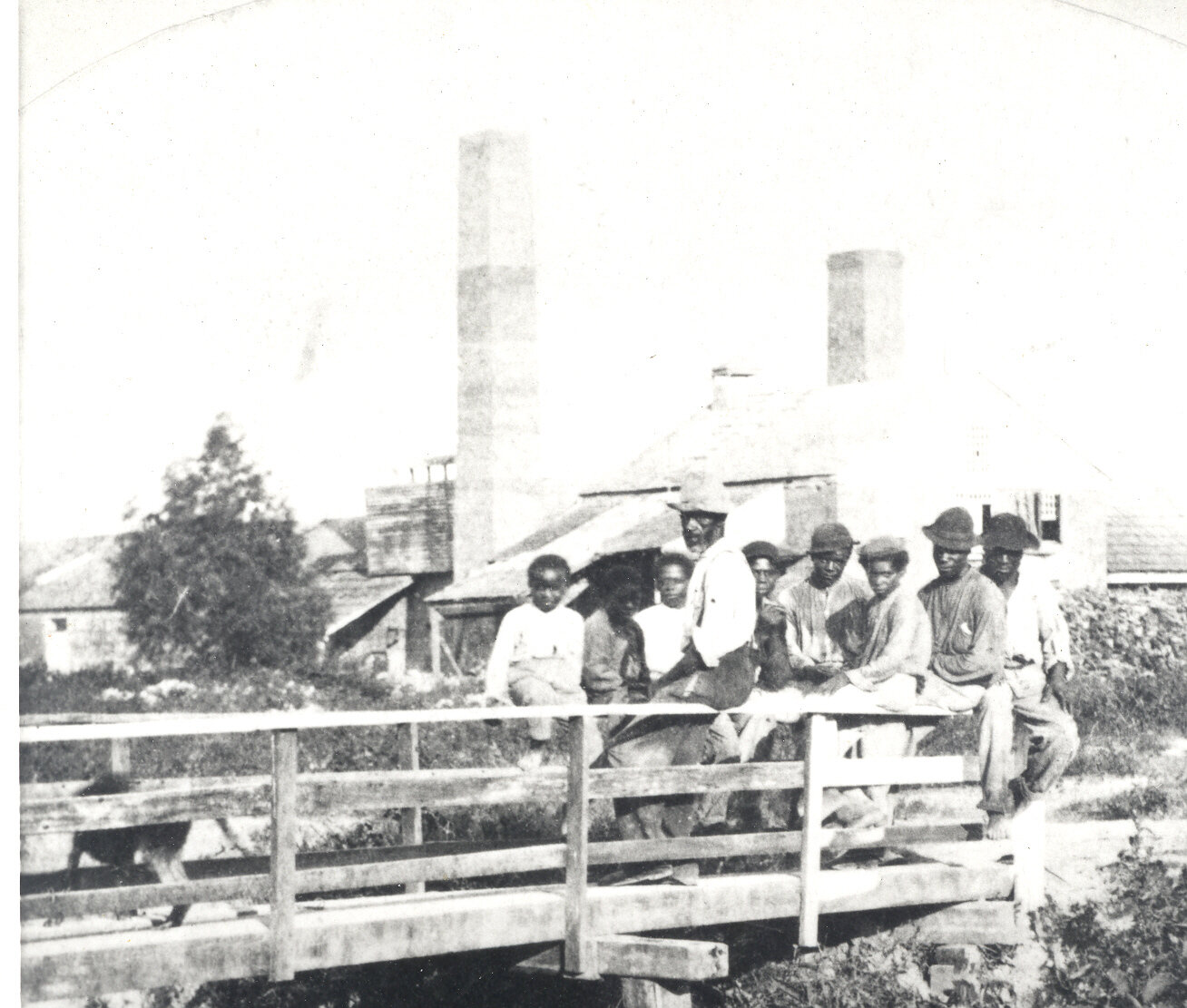Reconstruction & After
This photograph of African American workers outside the sugar mill on Grand Côte was taken in the 1870s after Emancipation. These men or their ancestors were likely enslaved on the Weeks plantations.
At the end of the Civil War, William Frederick Weeks returned to the Shadows to join his wife and daughters at the family home. In many ways, the war had profoundly changed the lives of those who lived at the Shadows and Grand Côte—the institution of slavery was abolished with the passage of the 13th Amendment in December 1865, and production of the region’s main cash crop, sugar, was dramatically reduced as Louisiana sugar plantations went from 1200 to 175. Grand Côte was one of those 175 to survive, with many of the free men and women once enslaved at the Weeks plantations continuing to operate sugar production as wage laborers. In 1865, only weeks after the passage of the 13th Amendment, Louisiana—along with many other Southern states—passed “Black Codes” that were intended to reinstitute much of the structures of the former slave economy. While these laws ensured some civil rights like the right to marry and own property, they broadly curtailed freedom by mandating that all freed men and women of adult age enter into a labor contract to work on the farms, plantations, and in the households of former slave-owners. Those contracts overwhelmingly benefited plantation owners, like William F. Weeks who established agreements that would trap many men and women in harsh and dangerous working conditions, cycles of debt to the employer, and low wages as their labor not only revived the Weeks-owned sugar plantation, but also supported the Shadows estate.
William F. Weeks and his family continued to live at the Shadows in the years after the Civil War ended—residing at Grand Côte during the grinding season. His daughters, Lily and Harriet (Pattie, as she was affectionately known), would continue to reside at the Shadows—Lily intermittently—into the 20th century.
Upon her death in 1918, Lily’s son, William Weeks Hall, purchased his Aunt Pattie’s half of the Shadows, launching a 40-year-long project to revive the house and its grounds.
The People of the Shadows
Sydney Bryant
Photograph of Charity.
During the Civil War, as Union Troops occupied the first floor of the Shadows, 20-year-old Sydney Bryant lived upstairs with her mother, Louisa, as well as another enslaved woman named Charity. The three women shared this half of the home with Mary Weeks Moore until she died in December 1863. Though they briefly shared living space, Sydney’s daily life working long hours with little personal autonomy as an enslaved woman before the war, and as a domestic servant after the troops marched onwards and Emancipation was achieved, would differ in every way from that of Mary’s.
The 1870 census, the first to be taken after Emancipation, lists both Sydney and her mother as “Domestic Servants” residing at the Shadows, highlighting how many formerly enslaved men and women remained at plantations to work for very low wages.
Harriet Weeks Torian
Harriet Weeks Torian was the youngest daughter of William Frederick Weeks and Mary Palfrey Weeks. Born in January 1864, just months before the Civil War ended, Pattie, as she was called by her family, was a “nervous invalid child.” She spent much of the first decades of her life at sanitariums and spring water resorts that promised to cure her ailments. By the 1890s, Pattie had overcome her health struggles and took an active role in the running of the family estate. As Weeks Hall put it on a 1953 recording, “As her invalidism gradually and fortunately disappeared… all that remained of this former condition was her lifelong and inherent air of command.”
By the turn of the twentieth century, Pattie had become a formidable businesswoman. She was a founder of the profitable Myles Salt Co. at Weeks Island and the owner of a dry goods store and dress shop on Canal Street in New Orleans. In 1909, she married Walter Torian and the couple resided in Lafayette until William Weeks Hall bought his aunt’s half of the property in 1919. Pattie died in New Orleans in 1945.

